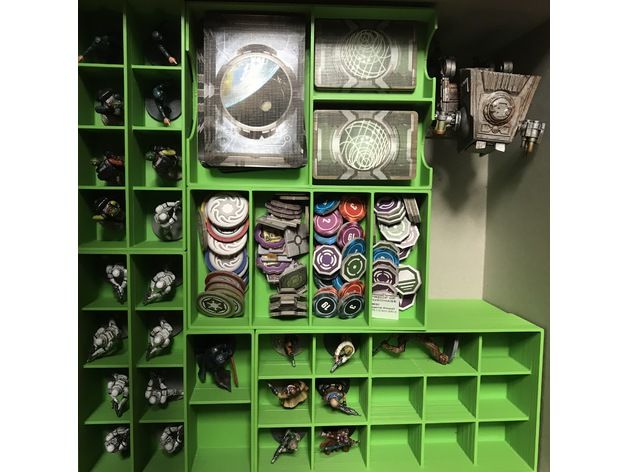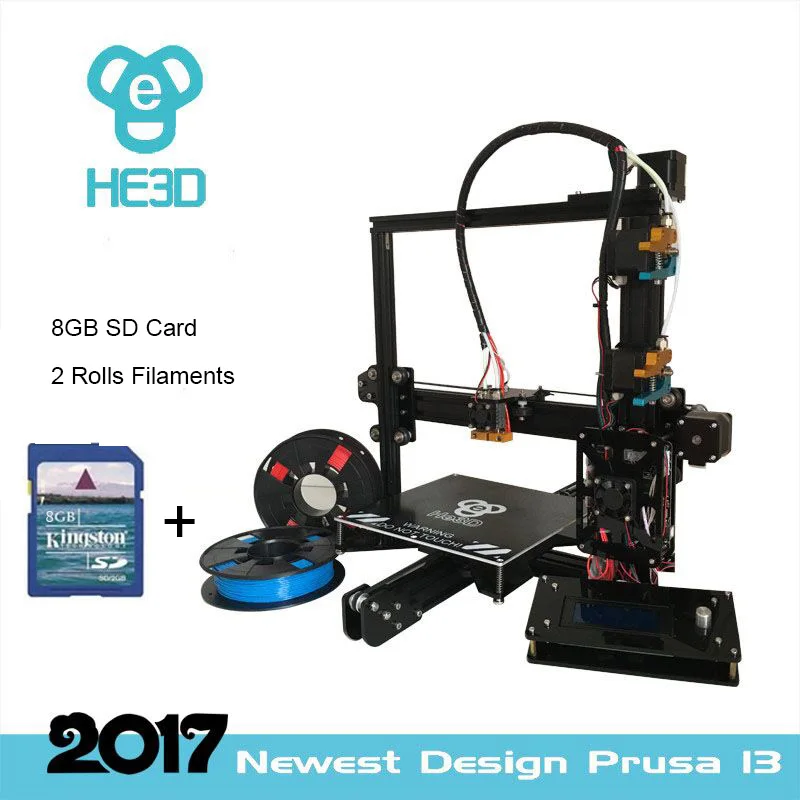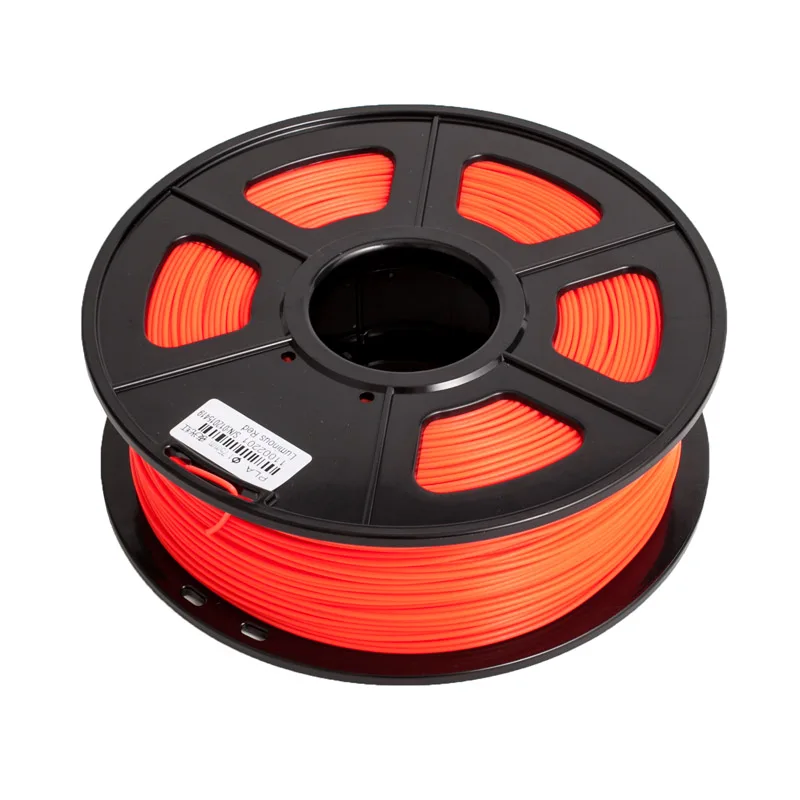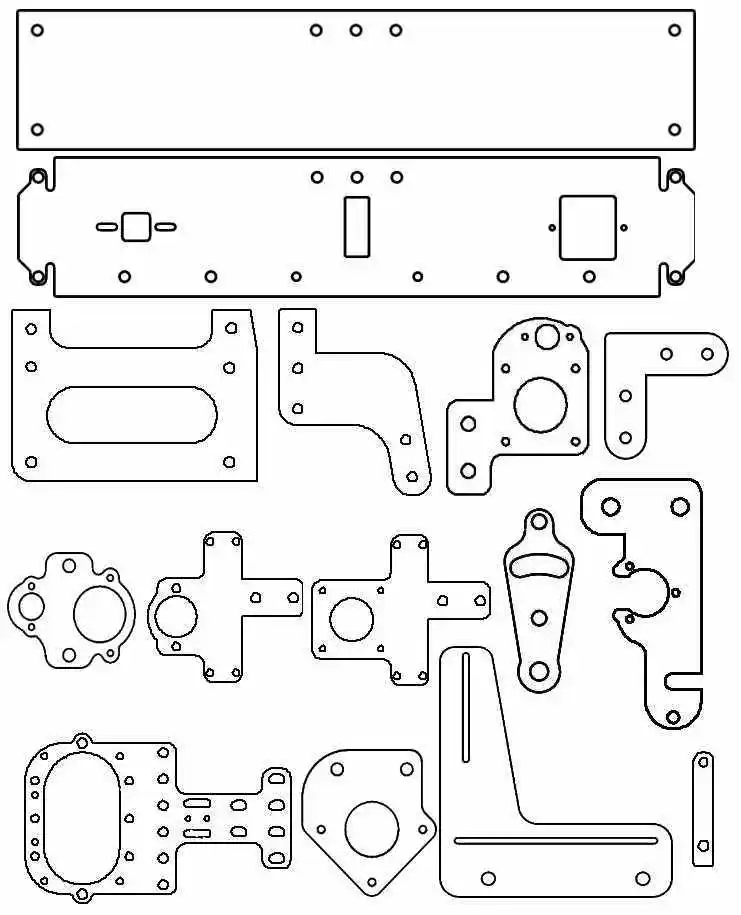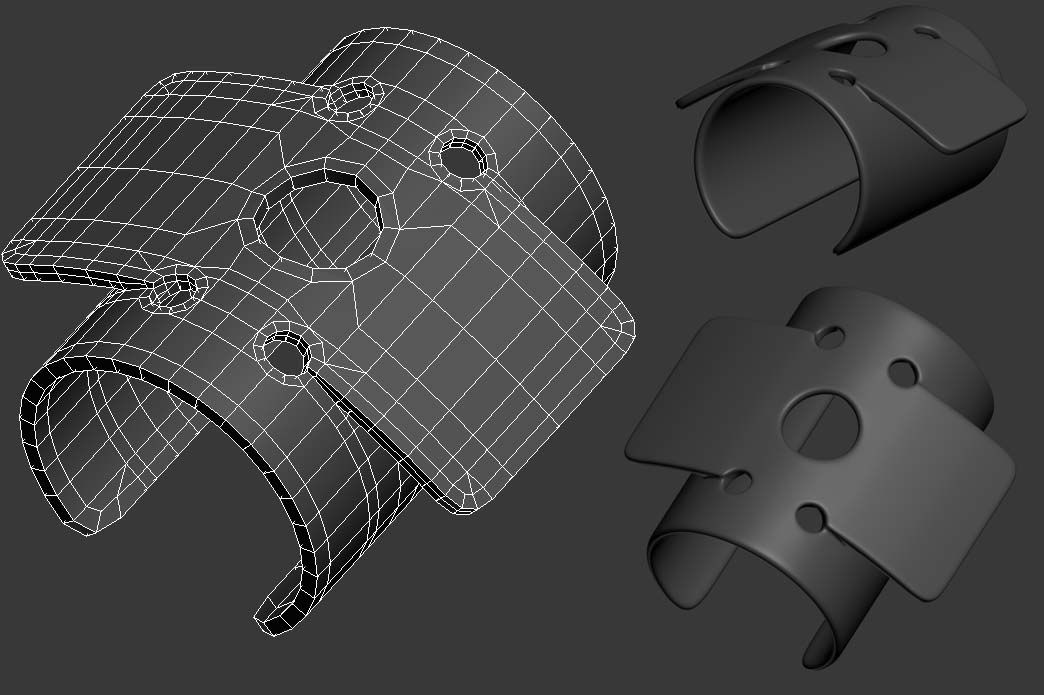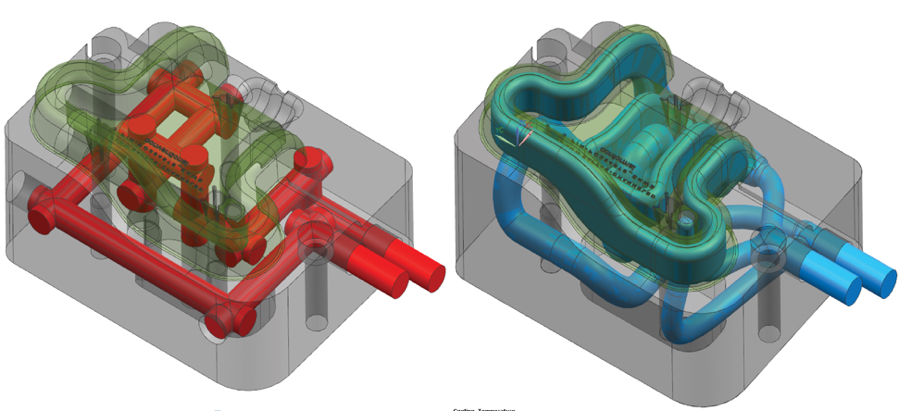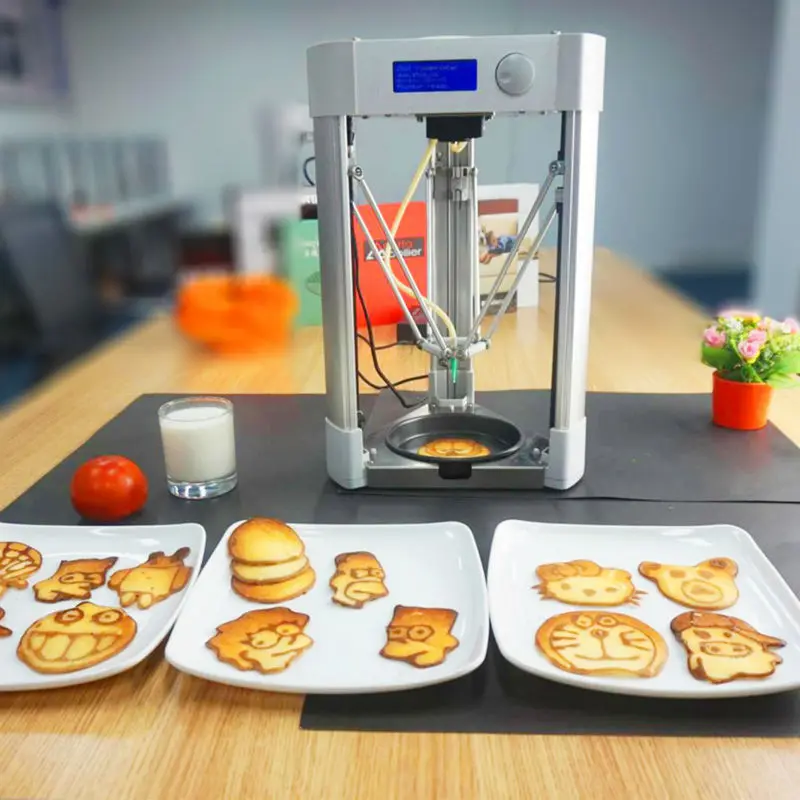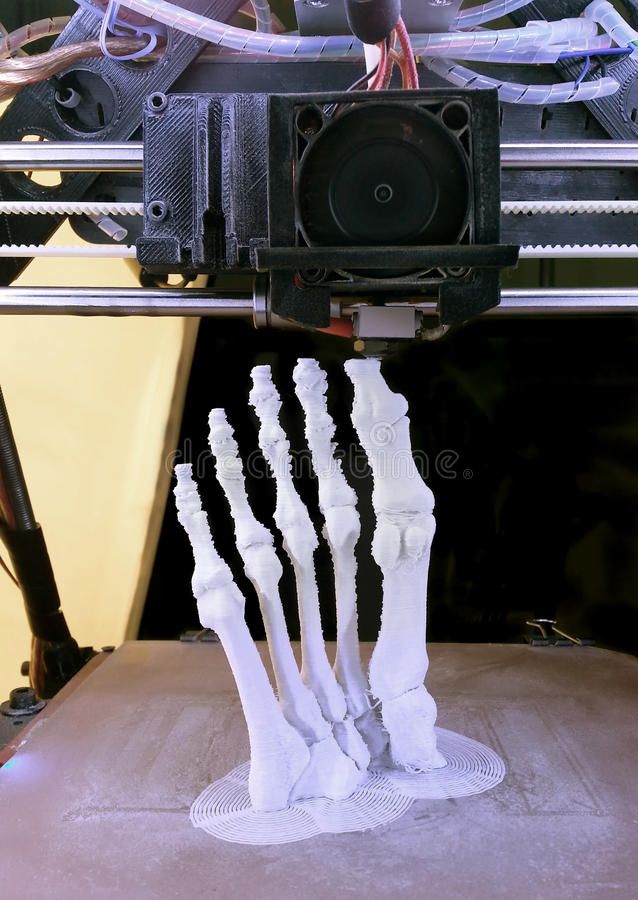3D printing courses and certificate programs online
The 4 Best 3D Printing Courses
Over the last decade, 3D printing has become increasingly popular due to the rapid growth in additive manufacturing. Since 3D printers are now more affordable and accessible, almost every DIY enthusiast wants to have one once in a lifetime.
Whether you are a professional engineer looking to improve your 3D printing skills, a beginner who wants to learn more about 3D printing, or someone who plans to build a 3D printing brand, the courses covered in this article will help you level up your skills.
Image Credit: UdemyThe course is mainly for design, but anyone interested in learning 3D printing from scratch, including hobbyists and DIYer enthusiasts, can take the course. To get started, all you need is Blender software installed on your computer, and of course, a 3D printer.
The course's primary focus is on designing 3D models in Blender, so it would be helpful if you are already proficient in it. Even if you are not, the course will teach you the basics and prepare you for creating your 3D models using the same software.
The instructor will model different objects such as a vase, phone stand, coin, phone case, and a few others throughout the course and then print them on a 3D printer.
Hence, designing 3D models will help you clarify your Blender concepts, and printing the models on 3D printers will help you learn how to fix design issues, export STL files, set up printing, and print models the right way.
Related: The Best Places to Search for 3D Printing Models
A comprehensive collection of 7.5 hours of on-demand videos, downloadable resources, and lifetime access to all old, updated, and new course material make this an excellent investment for those who want to get started in 3D printing.
One can't guarantee that the course will turn you into a 3D printing expert, but it is certainly helpful in improving your design skills on Blender and becoming better at 3D printing.
Image Credit: UdemyThe FDM 3D printing course is designed for anyone interested in learning how 3D printing works. It focuses mainly on basic to advanced 3D printing concepts without getting into 3D modeling and designs.
It focuses mainly on basic to advanced 3D printing concepts without getting into 3D modeling and designs.
Therefore, if you do not have any experience with 3D modeling, you should take other design courses for creating 3D models. Nevertheless, you have the option to print freely available 3D models or have them designed by freelancers.
The course discusses 3D printing and its history and explains how 3D printer parts work. After that, you'll learn about different types of filaments used in 3D printing and what slicing and g-code mean. The course will also cover how to set slicer settings correctly.
Next comes the course's main part, where the instructor introduces two popular 3D printing software, Simplify3D and Cura. He covers everything you need to know about using these tools, from downloading them to printing your first model.
RELATED: The Top Cura Plugins to Make 3D Printing Reliable and Convenient
In the finishing module, you will learn how to properly sand, glue, and prime your printed model.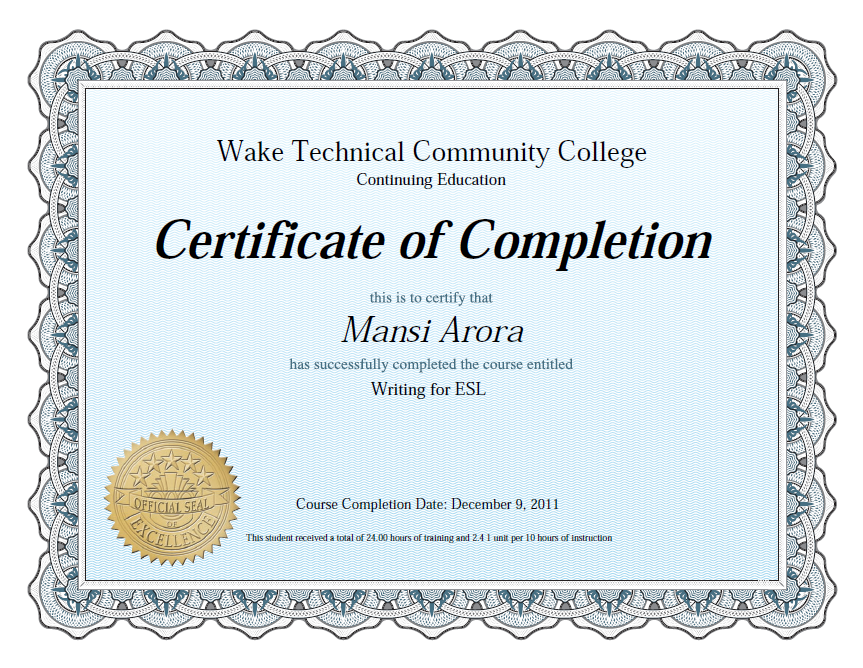 Last but not least, the course concludes by recommending a few 3D file sites and YouTube channels that you can follow to further hone your 3D printing skills.
Last but not least, the course concludes by recommending a few 3D file sites and YouTube channels that you can follow to further hone your 3D printing skills.
In short, if you already know how to model 3D objects but you have not touched a printer before, then this is the only course you need to print your first model. Overall, this course is worth investing in with 5.5 hours of video content, a certificate of completion, and additional downloadable resources.
Image Credit: LinkedInWhether you have experience with 3D printing or you're just getting started, taking this course is beneficial. The course's primary focus is troubleshooting issues one might encounter during the 3D printing process.
The course consists of four modules, each focusing on a particular issue. This first module explains why your 3D print is not sticking, what to do when the printer is under extruding or over extruding, and why the final printed part sometimes has incorrect dimensions or geometry.
The second module discusses filament and extruder issues in detail. The third one revolves around tips on how to print thin-walled, tall, and skinny objects, increase the strength of prints by altering their orientations, and print surfaces with curves and holes. The final module focuses on identifying and resolving software-related problems.
Related: The Best 3D Printers
The instructors of this course are both highly experienced, and the tips covered in the course will assist you when printing. Apart from the video content, you will have access to one project file, four-chapter quizzes, lifetime access to the course, and a certificate of completion.
Image Credit: UdemyThis course primarily targets engineers, hobbyists, designers, and creators who intend to convert their passion for 3D printing into a money-making business. All you need is a business mindset to take this course.
Since this is a business-focused course, it neither details the design process nor includes much about actual 3D printing, unlike other 3D printing courses on the list.
First, it teaches how to find a missing product opportunity. Then it helps you get your product designed by freelancers or yourself. Later in the course, you will learn everything you need to know about selecting a 3D design software, 3D printer, and 3D scanner.
Following a brief overview of the various tools mentioned above, the course dives into the marketing part of the 3D printing business. From setting up your business website to promoting your product on social media, you'll gain insight into everything in the course.
RELATED: Is 3D Printing Eco-Friendly?
You'll get a few tips on marketing your 3D printed products on search engines with SEO, locally on local directories, and globally on eBay, Amazon, Shopify, etc., followed by advice on handling shipping and payments.
Like the previous courses, you'll have lifetime access to the course, including six hours of on-demand video content and 19 downloadable resources. And of course, you'll get a certificate upon successful completion of the course.
Should You Take All These 3D Printing Courses?
Considering the nature of the content covered in these courses, each one examines a different aspect of 3D printing. The first course helps you design 3D models and export them for 3D printing. The second explains everything you need to know about printing 3D models.
The third one will assist you in identifying and troubleshooting 3D printing problems, and the last course will prepare you for building your 3D printing brand. Thus, if you can invest both time and money in these courses, all of them are 100% worthwhile.
Popular 3D Printing Courses To Help You Get Started
Disclosure: Some of the links below are affiliate links. This means that, at zero cost to you, I will earn an affiliate commission if you click through the link and finalize a purchase. Learn Robotics is a participant in the Amazon Services LLC Associates Program, an affiliate advertising program designed to provide a way for websites to earn advertising revenues by advertising and linking to Amazon.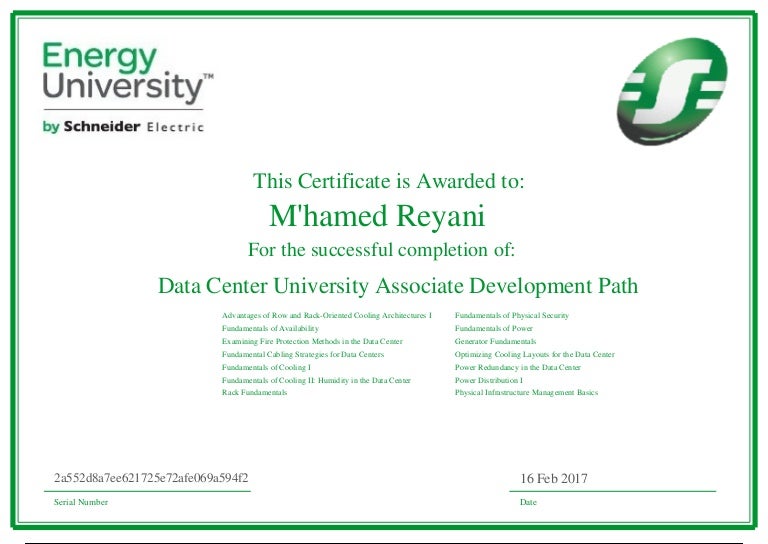 com.
com.
Having a hard time getting started with 3D printing? Are you looking for the right 3D printing courses to take without trying to decipher technical jargon?
Well, it’s no surprise you landed on this article.
When I started 3D printing in 2016, I was just as uncertain. I remember the moment as clear as day. I had been considering 3D printing for a few months and finally, on a whim, decided to buy an Anet A8. This was the kind of rash purchase you make on your iPhone (or Samsung – lol) and then wonder if you just made a mistake.
Have you ever felt like that? Uneasy, but hopeful.
Well, needless to say, my experience with 3D printing was very challenging at first. There’s a definite learning curve to working with 3D printer kits. But, if you want to learn the in’s and out’s of 3D printing, the best way is to build a 3D printer from scratch, slice up some models, and start printing.
A course can expedite the process of learning these skills.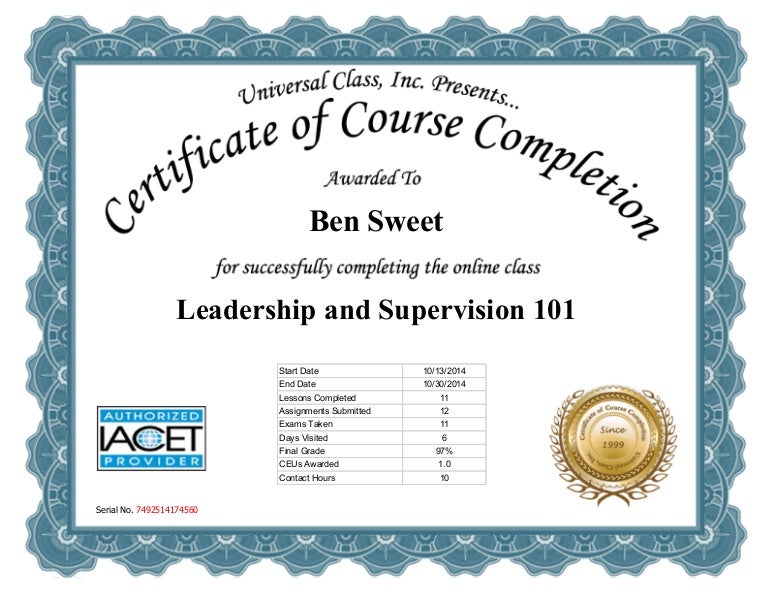
So rather than three months of frustration, it might be three weeks. However, a course won’t replace the hands-on skills and experience you gain by building projects with a 3D printer.
In this article, we’ll share our findings of popular 3D printing courses from websites like Coursera, LinkedIn Learning, and Udemy. Then we’ll talk about how to get printer-specific information and training through vendor and manufacturer websites.
By the end of this guide, you should have a good idea as to which 3D printing courses you should take, and how to get started with your 3D printer.
Ready to see what we found?
Anet ET4 3D Printer Fully Open Source with Resume...
Auto-leveling frees you from time-consuming and labor-intensive leveling tasks. ; Filament detection that detects the filament end and sent reminder to avoid air-printing.
; Filament detection that detects the filament end and sent reminder to avoid air-printing.
$356.20
Why you should take a 3D printing Course
There are a handful of reasons why you should take a 3D printing course, and if you’re reading this article, you probably fall into one of these cases.
3D printing courses are for:
- Hobbyists new to 3D printing;
- Engineers and professionals looking to understand additive manufacturing; and,
- Educators introducing 3D printing to their classrooms.
Even if you’re not looking to own a 3D printer, and won’t be hands-on with slicing files, and post-processing, you may want to learn more about the high-level 3D printing process.
If you just bought a 3D printer, you might be feeling overwhelmed about how to get the printer assembled, powered, and working. Topics like bed leveling and Z-height might seem foreign. That’s why finding a good 3D printer course, tutorial, or startup guide can help.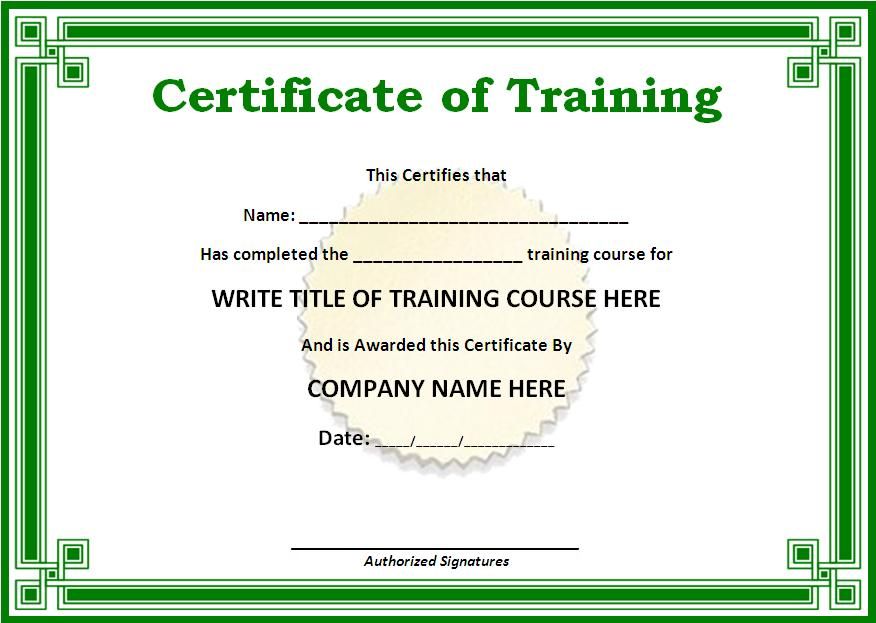
3D Printing Courses on Coursera
These courses are best suited for engineers and working professionals who are looking to get a better understanding of what 3D printing is and the 3D printing process.
I wouldn’t recommend taking these courses if you just bought a 3D printer kit and want to learn how to get it assembled. Courses on Coursera tend to be more strategic than tactical. So, if you want to get a holistic understanding of 3D printing (or want credentials to show off), then taking 3D printing courses on Coursera makes sense.
Each of these 3D printing courses is beginner-level and taught by the University of Illinois. Expect to spend 5-6 weeks per course working through the material. You can enroll in each course separately or through Coursera Plus.
Let’s learn more about each of these courses and how they can benefit your 3D printing journey.
3D Printing Applications (Coursera)
This month-long beginner course will help you understand how 3D printing is applied in design, retail, education, and manufacturing.
While you won’t be hands-on with a 3D printer, you will gain insight into the 3D printing market and how to think like a designer.
“Awesome course for anyone in industry who wants to get introduced to the applications of 3D printing and get an introduction to design thinking.”SS, October 2018
Take this course on Coursera.
3D Printing Revolution (Coursera)
Learn how 3D printers work and what you can make with 3D printers. Then familiarize yourself with the 3D printing ecosystem and how they are revolutionary to the modern economy.
“This course is a great introduction into the industry that is 3D printing. Whether you are involved in a business, engineering, design, or another career, I would definitely recommend this course.”JK, August 2019
Take this course on Coursera.
3D Printing Hardware (Coursera)
Learn about the history of 3D printing and the components that make a 3D printer. In this course, you’ll learn how to build and repair 3D printers. The course also promotes a discount on Ultimaker printers if you enroll in the paid course.
In this course, you’ll learn how to build and repair 3D printers. The course also promotes a discount on Ultimaker printers if you enroll in the paid course.
I’m not sure to what extent the Ultimaker discount covers, or if it’s even worth the $79 price to receive the discount. It could be something to investigate further if you’re interested in hands-on work with 3D printers.
“I was waiting for this course from more than a year, since i had completed all the other courses of this series, hope to learn a lot from this wonderful exciting course, thanks to the instructors.”PK, November 2019
Sign up for this course on Coursera.
3D Printing Software (Coursera)
Learn how to design objects using 3D modeling software including Tinkercad, Fusion 360, and Sketchbook, and Sketchfab.
By the end of the course, you’ll have an understanding of how to design a wide variety of objects for hobby and professional projects.
Plus, if you’re looking for a beginner to an advanced course on Fusion 360, this is a great formal option.
“This is the best course I have made this year. This course give to you a chance to create objects from reality or just using your imagination. Enjoy this course, guys. Thank you for all.”DS, March 2018
Take this course on Coursera.
3D Printing Capstone (Coursera)
Finally, the last of the 3D printing courses by the University of Illinois is a Capstone project. I don’t think this course is entirely useful unless you don’t have access to a 3D printer.
If you do have a 3D printer, skip this course, and go directly to making 3D models (and printing them out yourself). Instead of spending $79 towards the certificate, use that money towards a 3D printer!
But, if you’re interested in learning more about the capstone (or want a certificate to show that you’ve completed the series), you can enroll in the course here.
3D Printing Courses Lynda/LinkedIn Learning
LinkedIn Learning is a great place to find short courses on very niche topics.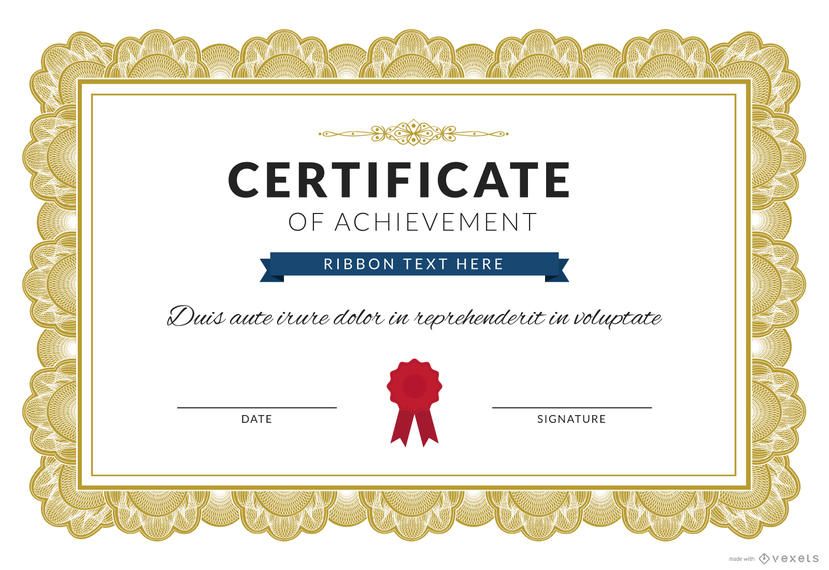 These courses are carefully curated and are designed for working professionals. Once you finish a course, you can add the credential directly to your LinkedIn profile.
These courses are carefully curated and are designed for working professionals. Once you finish a course, you can add the credential directly to your LinkedIn profile.
If you’re looking for a way to learn 3D printing concepts without going through homework assignments and quizzes, then LinkedIn Learning is a great option.
Master Additive Manufacturing and 3D Printing: LinkedIn Learning
The first option is a six-course Learning Path on LinkedIn Learning. The Master Additive Manufacturing and 3D Printing include 10-hours of video lessons to familiarize you with the basics of 3D printing.
By the end of the Learning Path, you’ll understand how to design CAD models and prepare them for 3D printing. This is a great option if your goal is to learn 3D printing and principals of Additive Manufacturing over a weekend.
Learn more about the Master Additive Manufacturing and 3D Printing Learning Path, here.
Learning 3D Printing: LinkedIn Learning
This is a 1-hour and 16-minute crash course on 3D printing course designed for intermediate-level individuals.
Expect to learn about what you can make with 3D printers, how to design 3D models and use 3D scanners, and how to create watertight 3D designs. You’ll also gain insight into fixing corrupt 3D files and how to export CAD files for 3D printers.
If you’re looking to fill your lunch hour or an afternoon of professional development, then this could be a good course to add to your list.
Learn more about the Learning 3D Printing course, here.
Courses for Specific 3D Printer Models
You can go directly to the manufacturer’s website and look for courses, manuals, and training for your 3D printer. Some manufactures have free resources, while others make you purchase the curriculum. Also, the quality of the training materials will vary vastly between manufacturers.
For this reason, I’ve listed some popular 3D printer models and where to find reference materials and online 3D printing courses.
At a very high level, 3D printing processes are very similar regardless of the 3D printer you use.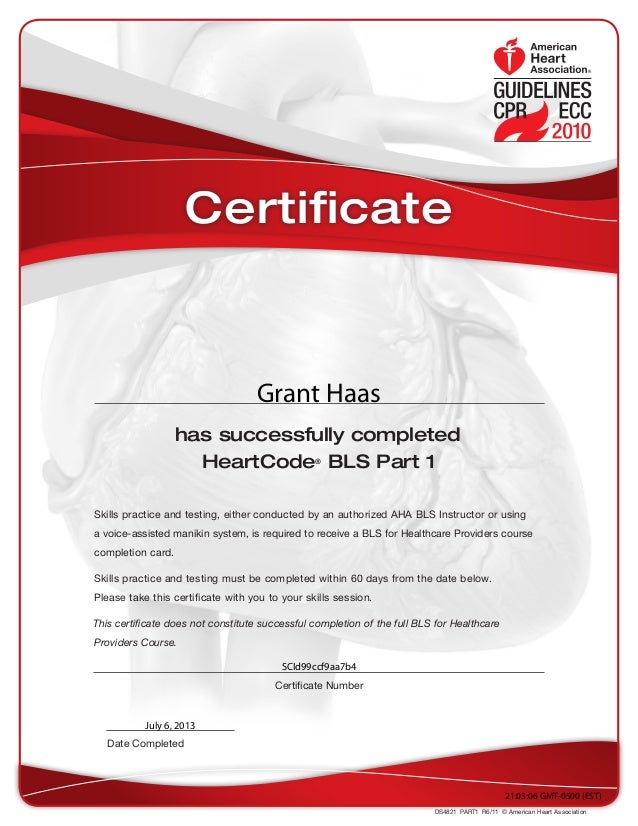 If you’re using a 3D printer kit, like the Anet A8, then you’ll have some additional assembly and calibration time to factor in.
If you’re using a 3D printer kit, like the Anet A8, then you’ll have some additional assembly and calibration time to factor in.
However, the actual steps you’ll take to 3D print a component pretty much regardless of whether you’re using an Anet A8 or an Ultimaker S5.
Anet A8 Resources
The Anet website has some resources, but they’re not overly comprehensive. I recommend following the assembly instructions and YouTube Videos.
I also put together a 3D printing article for the Anet A8, which you can read here. There’s not a whole lot of resources for getting your 3D printer up and running, except for going through the process yourself and troubleshooting along the way.
Learn Robotics Anet A8 Starter Guide
Anet A8 3D Printer,Desktop Acrylic LCD Screen...
Ultimaker Resources
Visit the Ultimaker website for support and reference guides. There’s a pretty thorough “Tips and Tricks” page for Ultimaker printers. I recommend using this page as a guide if you’re setting up a new Ultimaker printer.
Ultimaker 2+ 3D Printer
Updated 2016 model - multiple improvements made on the original Ultimaker 2
MakerBot & Stratasys Courses
MakerBot has a great selection of courses and curriculum for Educators. Unfortunately, they don’t have courses or an academy for regular customers just looking for resources on 3D printing. I recommend searching through their support pages if you have particular issues or need help getting started.
Stratasys has an online academy for Stratasys customers. If your company currently owns Stratasys printers, then you may want to request access to their online portal.
MakerBot Replicator + 3D Printer, with swappable...
$2,099.00
Prusa Resources and Courses
Your best bet is to go directly to the Prusa website and look through their knowledge base and forums. Once your printer is assembled, grab a copy of their Basics of 3D Printing eBook and start reading.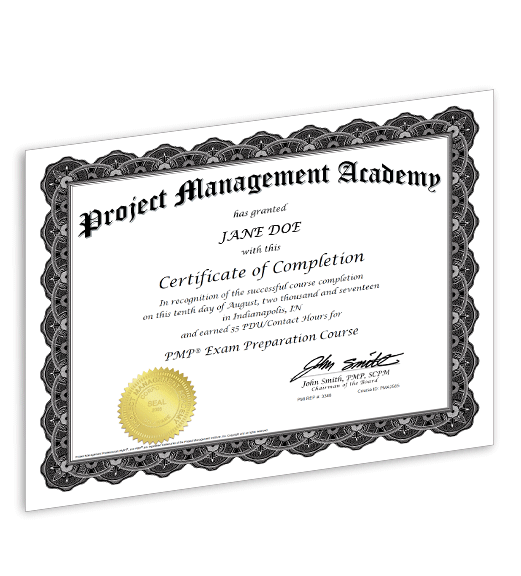
And, if you can’t find a course on exactly what you’re looking for, there’s always YouTube.
Expedite your 3D printer knowledge with Online Courses
It’s no secret that 3D printing is a game-changer for schools, manufacturing plants, and hobbyists.
With a shorter lead time and a lower cost of entry, it’s no wonder that makers, teachers, and engineers want to break into the world of 3D printing.
Regardless of whether you’re looking to start a 3D printing hobby or add 3D printing to your factory floor, online 3D printing courses can reduce the learning curve, and make 3D printing more fun and enjoyable.
Which of these courses are you planning to take? What kind of 3D printers have you used? Let us know in the comments below!
And, good luck on your 3D printing journey!
Related Articles on 3D printing
- Top five 3D printers worth buying
- Where to find 3D models to print
- How to use Fusion 360 to Design a Robot
- Best Anet A8 Upgrades
- Read this before buying an Anet A8
New version of the site
Go
Material on the 3D printer your cherished dream, join our cadets
Study using the inverted class technology: online theory, practice in TSMIT
Sign for the course
Presentation of the 3D modeling and 3D printing course
Video processing. ..
..
Presentation content:
-
0:00 About the project
-
1:00 Achlet
-
1:57 Comparison with other similar courses
-
2:17 Course device (Contents)
-
2:45 On the scalability of the course and applicability for any technological mug for any technological circle /CMIT/FabLab/Hackspace
-
3:05 Our Resources
-
3:57 Main Goal
audience and online.
It turned out that the knowledge gained with the help of MOOC (Massive Open Online Course) is stronger than that obtained by the traditional method.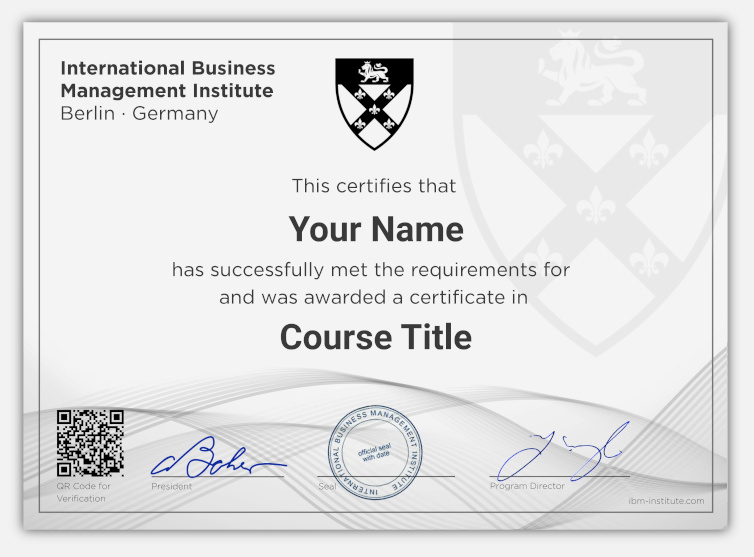
Moreover, underperforming students after taking an online course (for example, a difficult course in mechanics) showed the same results as their more successful classmates. Thus, by the end of online learning, students acquired the same knowledge, regardless of the level of entry.
learn at your own pace
Each student learns theoretical material at his own pace - some need more time, some already know the material partially, some learn faster than others;
deeper understanding
Due to the fact that class time is devoted exclusively to practical and group work, there is a deeper understanding of the application of acquired knowledge in practice;
systematic approach
The teacher monitors the progress of each of the cadets, it will be possible to proceed to the next modules of the course having achieved confident results in the completed practical tasks and exercises.
The first
in 2014 developed and launched a course on 3D modeling and the use of 3D printers in Russia
5 years
we teach 3D modeling and proper handling of 3D printers
available
3 times
Over the past 4 years, the number of users of the Blender-3D program and 3D printers in Krasnodar and the Krasnodar Territory has increased
1
of our teachers-the main regional expert of the 3D education association
> 500
Lectures took place and lectures
3
people change their lives and change their lives and change their lives and connect it in the future with 3D technologies
Artek
This year the International Children's Center hosted several of our students - winners of the regional Olympiad in 3D technologies
Learn Blender
freeware lightweight and fast and feature rich
Enroll in a course
Blender Reel - SIGGRAPH 2019 - Made by you
Video Processing. ..
..
Blender is a free professional 3D editor for creating 3D computer graphics, including tools for modeling, preparing for 3D printing, sculpting, animation, visualization, post-processing and editing video with sound, and as well as the creation of computer games.
Wiki About Blender 3D
Download
Sentences is unlimited, download and study 3D for free
How are classes at
Outstanding cadets "Three -dimensional stations"
Daria strugged for a career from an additional education from an additional education. 3D-modeling and printing of the regional Station of young technicians to the head of the IT-direction of the educational center at the Moscow State Technical University. Bauman.
Dmitry Shumeiko after the course of a young fighter at the Station won the competition U.M. N.I.K. – 2016 Currently, he is developing the "Experimental aqua complex" of KubSU.
N.I.K. – 2016 Currently, he is developing the "Experimental aqua complex" of KubSU.
Artyom Kuligin - develops unmanned aircraft in the Krasnodar Territory by printing simulated drone prototypes on 3D printers. Developer of a domestic flight simulator. The only teacher in Krasnodar who revives circles on rocket modeling.
Maxim Derikov - gradually masters the technologies of prototyping, 3D scanning, reverse engineering. Max plans to launch production in the city, region and the whole country, but a new breakthrough level!
Groups are divided into children (9-18), 1 year students and adults (19+) in the 3-month compact program
| Name | Description | Price | ||
| Online course | Commercial printer applications, small batch production, prototyping, specialty printer applications | 2900 rub/course | enroll | |
| 3D Printing Private Practice | Individual session to work on emerging issues | 1500 rub/lesson | Sign up | |
| 3D Printing Group Practice | Group lesson on course topics: how to slice in Simplify, advantages and disadvantages of different printer designs, working with different materials. | 500 rub/lesson | enroll |
* For a promotional code for a discount, contact the creator of the course vk. com/manitou
com/manitou
!Please note that practical classes on 3D printers at CMIT are paid separately
Important!
All those who completed the training get the opportunity to implement the existing planned projects on the appropriate CMIT equipment. We stimulate your growth, your personal development, encourage you to participate in various competitions and cross (with other educational institutions) educational projects. We will explain, we will teach, we will prompt!
As you know, young people under the age of 30 usually act as innovators, it is the youth who make breakthrough discoveries today. Each new course (there are already 6 of them released) guys with interesting ideas and burning eyes come to the Station - both schoolchildren and students (future ichthyologists, hydro-engineers, civil engineers, designers, electronics engineers and many others) and accomplished adults who are simply curious technology or dream of starting their own 3D printing business.
Course author will answer!
Artyom Sobolev - founder and ideologist of CMIT, models in Blender. Engaged in commercial 3D printing and training since 2013.
Developer of educational annual programs "3D modeling and printing on 3D printers" and "Circuit engineering".
Chief regional expert of the 3D Education Association, expert of the All-Russian competition in 3D modeling "B3think"
Electrical engineer by education.
+7-928-043-27-44
I want to study!
Transport
According to 2GIS to CMIT 40 minutes from the shopping center "Gallery" on buses 52 and 96. Minibuses going to the "Station" from different parts of the city: 36, 42, 48, 58, 62, 78
-
By clicking on the link, click on the "Route" button
-
Specify the place from which you plan to get, smart 2GIS will build the best route for you and advise you on the best transport to get there.
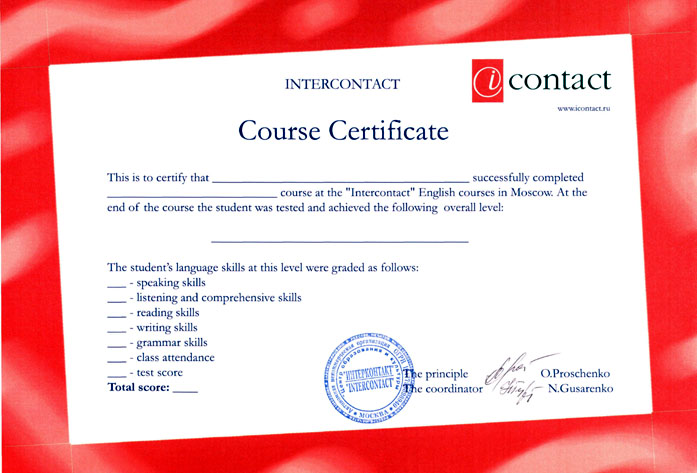
Accessibility
The CMIT has taken measures to ensure the accessibility of people with disabilities and other groups of citizens with limited mobility: a bell with an annunciator has been installed, index contrasting plates with Braille explanations for the visually impaired have been placed around the territory of the Measuring Instruments Plant.
we are supported
Rostec and MAI launched a training program for industrial 3D printing
The Center for Additive Technologies (CAT) of the State Corporation Rostec together with the Moscow Aviation Institute is launching a training program for specialists in the field of 3D printing. In the first stream, the program will be mastered by up to 100 people, who will have the opportunity to find employment at the CAT sites in Moscow and other regions of Russia.
Recruitment for courses is conducted among university students and experienced professionals who want to improve their skills.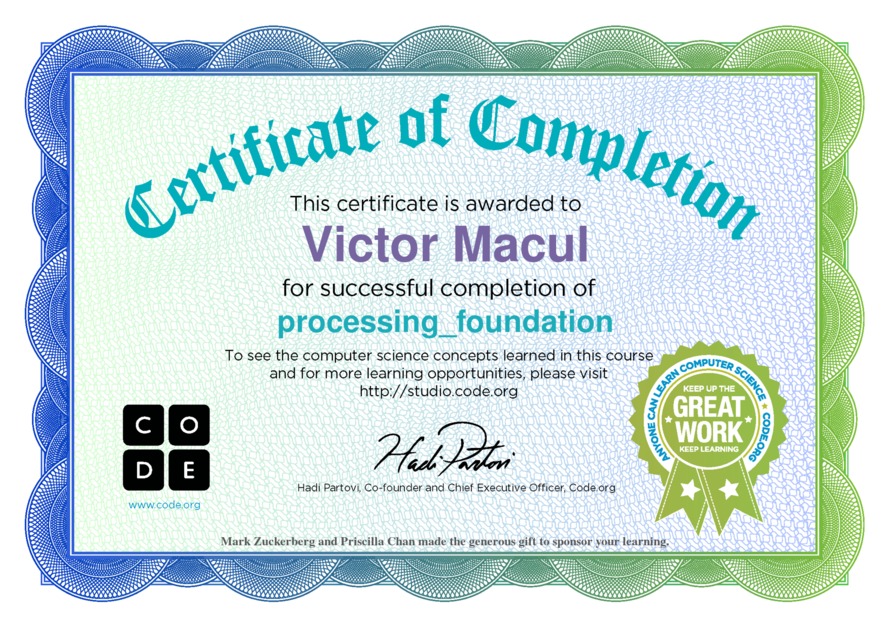 You can choose from one of four programs: "Design Engineer in Additive Technologies", "Process Engineer in Additive Technologies", "Online Course in Additive Technologies" and "3D Plastic Printing".
You can choose from one of four programs: "Design Engineer in Additive Technologies", "Process Engineer in Additive Technologies", "Online Course in Additive Technologies" and "3D Plastic Printing".
It is planned to train about 100 specialists in the first stream. The classes will be conducted by leading practitioners from the Rostec Center for Additive Technologies and MAI lecturers.
3D printing technologies are increasingly being introduced into modern aircraft industry. They are used, for example, in experimental demonstrator engines PD-35, VK-650V and VK-1600V, body parts for the Ansat-M helicopter, the fuel system of the PD-14 engine of the MS-21 airliner and other developments of the Rostec aviation cluster.
“Taking into account the forecast of growth in production volumes, we clearly understand that in 2-3 years we may face a shortage of specialists in the field of implementation and application of additive technologies. It is for this purpose that an educational project has been launched jointly with the Moscow Aviation Institute. It is aimed at improving the skills of existing employees of enterprises and forming a cohort of new specialists from among the students," said the Director General of Rostec's CAT Vladislav Kochkurov.
It is aimed at improving the skills of existing employees of enterprises and forming a cohort of new specialists from among the students," said the Director General of Rostec's CAT Vladislav Kochkurov.
The start of the program is scheduled for July 2022. The duration of training varies from 14 to 30 days. At the end of each training block, an intermediate certification and a final exam at the end of the course are provided. Upon completion of training, students will receive a state-issued certificate.
“In the modern world, complex specialists are in demand who are able not only to grow a part, but also to organize work on modeling and topological optimization of a structure, technological design of additive manufacturing, testing and confirmation of characteristics for setting up a serial product. This is what the MAI training programs are aimed at,” said the Director of the Directorate of Advanced Educational Programs of the MAI Dmitry Kaisin .
CAT of Rostec holds a license from the Russian Ministry of Industry and Trade for serial 3D printing of aviation products. This is the first and only Russian enterprise to date that has confirmed its competence in mass industrial 3D printing in the interests of the aviation industry.
Center for Additive Technologies Joint Stock Company has been the single integrator in the field of industrial 3D printing of the Rostec State Corporation since 2018. CAT implements the entire range of tasks from an idea to the organization of mass production in any of the industries. The company has the largest fleet of industrial equipment for additive manufacturing in Russia and a professional team of technical specialists with rich experience in the application of the latest technologies. For 4 years of active work, CAT has mastered the production of more than 600 types of parts in the fields of aviation, engine building and many others.
State Corporation Rostec is the largest industrial company in Russia.



